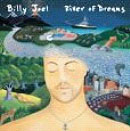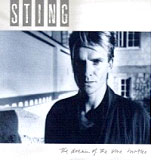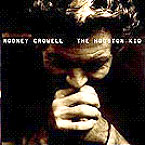|
|
Making Dreams into Music ©2007 Nancy Grace For the past 15 years, I’ve been collecting stories of contemporary musicians who’ve written songs inspired by dreams. As a dreamworker and a musician myself, it seemed only natural that I would become interested in this intersection of the two worlds.
Over the years, I’ve found stories of dream-inspired music on the radio, during live concerts, in liner notes to albums, on the internet, and from a few formal interviews I’ve done as well. Musicians I know of whose work has been inspired by dreams include Paul McCartney, Shawn Colvin, Sting, Rory Block, Jimmy Dale Gilmore, Johnny Cash, Butch Hancock, David Bowie, Chick Corea, Patti Cathcart, Rodney Crowell, Ladysmith Black Mambazo, Brooks Williams, Billy McLaughlin and Dave Carter. I’m sure that a complete list includes hundreds, if not thousands, more. In 2000, I wrote a chapter on the subject for Kelly Bulkeley’s Dreams: A Reader on the Religious, Cultural and Psychological Dimensions of Dreaming.2 There I shared stories about the dream-inspired songs of Sting, Paul McCartney, Rory Block, Shawn Colvin, and Billy McLaughlin. I suggested that these modern-day musicians who find inspiration in their dreams are carrying on, albeit in a very different form, the spiritual lineage of ancient shamanic cultures, whose practitioners regularly heard songs in their dreams and brought them into this world to experience their power and beauty. Here I would like to tell you three stories – from Rodney Crowell, Sting, and Rory Block – which share a common theme that beautifully illustrates the connection between dreaming and creativity.
One night I had a dream and woke with the slide riff from Charley Patton's Bo Weevil Blues soaring through my brain with great clarity and volume. This was extremely odd as I had never focused on that particular song nor had I heard it for 30 years. I couldn't even remember the title and had to listen to the entire CD collection to find it. I realized I was meant to record it, and that focused this album. I decided I was going to go for 'feel' over 'perfection.'
I wanted to move in the spirit of the early recordings where spontaneity and musical freedom were at the core of everything, all soul and raw power and no technological advantages save the on/off button on the tape recorder. I suddenly felt free to leave the buzzing notes, the imperfect intonation, the unfinished endings, because it's not about a cleanly edited crisp song, it's about joy and dedication to the beauty of music that was the original basis for everything. I asked the engineer to record the vocals a little bit harder and thinner than today's audiophiles would perhaps appreciate, but I wanted to be closer to the old sound. I wanted it to be just a little bit disturbing.4
Confessions of a Blues Singer went on to win the WC Handy award for Acoustic Blues Album of the Year in 1999. Clearly, the spontaneous, free and soulful approach which the dream brought Block was quite effective!
I had a dream that I was back home in Hampshire, looking out the window into this big walled-in garden I have out back with its very neat flower bed and foliage. Suddenly, out of a hole in the wall came these large, macho, aggressive, and quite drunk blue turtles. They started doing backflips and other acrobatics, in the process utterly destroying my garden. . . . I'm enjoying this curious spectacle, and the dream is so strong I remembered it perfectly when I woke up, to the point where it became part of my juggernaut to complete this record. . . . For me, the turtles are symbols of the subconscious, living under the sea, full of unrealized potential, very Jungian in their meaning. . . . So with the album I wanted to destroy a lot of preconceptions and expectations, and do something unsettlingly different. These blue turtles, these musicians, were gonna help me. And they did.5 Similar to the album which resulted from Rory Block’s dream, The Dream of the Blue Turtles represented a striking departure from the style of music Sting’s fans were used to hearing from his days with the Police. While it’s often challenging for an established musician to go in a new musical direction, given the expectations of fans and record labels, this album was very successful, selling over three million copies and containing several hit singles.
I had this nagging feeling and I was unsettled, but I couldn't put my finger on what was wrong. One night I had a dream where my parents came and took me on a tour of their new house. And at first it looked great, and then when I started looking closer I realized that they had a lot of work ahead of them. And it was obvious what this dream was about. I had a work in progress myself. They said to me, 'Hey, we like this record you're making, and we really approve of it, but we would like to suggest to you that you're not telling the whole story.' And I said, 'O.K., what? What do I need to do?' I tried to understand, but I did not get what it was. But it woke me up and when I rolled out of bed, I picked up the guitar and wrote 'I Know Love Is All I Need' in about a half hour.
I went in the next night and recorded it, and we set up in a circle and recorded it live. Suddenly I thought, 'Now I get it. This is how I should make this record.' I had been trying to record the way I always had before--by recording a basic track and then overdubbing and fixing mistakes and trying to make everything perfect. But I realized then that this is not about making a perfect pop/Country record. This is about telling my story. . . There are mistakes, false starts and stops, but the spirit is there. Because in the end, music is not about perfection, it's about our humanness--and that ain't ever gonna be perfection.6
Echoing the success of Sting and Rory Block’s albums, Crowell’s album, The Houston Kid, was hailed by critics as the album of his career. What fascinates me about these three stories is that they share themes of letting go of expectations, of preconceived notions, and of aiming for perfection, in favor of expressing something more basic and alive. Rory Block wanted “to go for 'feel' over 'perfection.’” and Rodney Crowell learned that “music is not about perfection, it’s about our humanness.” Stings says, “I wanted to … do something unsettlingly different” and Rory Block says, “I wanted it to be just a little bit disturbing.” Crowell says, “There are mistakes … but the spirit is there” and Block says, “it's about joy and dedication to the beauty of music.” That the dreams of Sting, Rory Block and Rodney Crowell each brought innovative energies to their creative work is, I believe, a testament to what Jeremy Taylor calls “the archetypal creative impulse woven into the fabric of every dream.”7 Taylor says that dreams always break new ground, and this is certainly the case here (even literally for Sting, as his turtles were destroying his garden!). In light of the dreams of the blue turtles, the ‘bo weavil blues,’ the mysterious message from Rodney’s Crowell’s parents, and so many other dreams which have led to artistic creations, scientific inventions and discoveries, there is likely something in the very nature of dreaming which inspires this kind of creative upheaval and innovation. I welcome your reflections and questions, as well as any sharing about your own experiences with dreams and music, or stories you may have heard which can be added to the collection! I’ll end here with a short list of dream-inspired songs…. Lennon/McCartney – Yesterday 1Master Class with Billy Joel, Berklee College of Music, Boston, MA, Spring 1992. Also mentioned in The Committee of Sleep: How Artists, Scientists, and Athletes Use Their Dreams for Creative Problem Solving--and How You Can Too, by Deirdre Barrett (Crown Publishers, 2001). 2 “Making Dreams Into Music: Contemporary Songwriters Carry On an Age-Old Dreaming Tradition,” in Dreams: A Reader on the Religious, Cultural and Psychological Dimensions of Dreaming. Bulkeley, Kelly (Ed), New York: Palgrave, 2001. 4 From the liner notes to Confessions of a Blues Singer, Rounder Records, 1998. Reprinted at www.roryblock.com. 5 From Rock Lives: Profiles and Interviews by Timothy White (New York: H. Holt, 1990, p 692-709), cited at http://users.sisna.com/clio95/blueturtles.html - “Sting 101” 7 From www.jeremytaylor.com/creativity.htm. Also see Where People Fly and Water Runs Uphill: Using Dreams to Tap the Wisdom of the Unconscious (Warner Books, 1992).
Close window to return to the bulletin board
|
| IASD Home Page | PsiberDreaming Home |

 My first moment of inspiration came in 1992, while listening to Billy Joel at Berklee College of Music in Boston, where I was then a student. Responding to a question about where he gets ideas for songs, Joel replied that essentially all his songs come from dreams.
My first moment of inspiration came in 1992, while listening to Billy Joel at Berklee College of Music in Boston, where I was then a student. Responding to a question about where he gets ideas for songs, Joel replied that essentially all his songs come from dreams. Rory Block is a traditional acoustic blues guitar player who, according to The Blues Foundation, is “widely regarded as the top female interpreter and authority on traditional country blues worldwide."3 Rory has a rich dream life which from which she’s drawn much inspiration. She tells the following story about the making of her 1998 album, Confessions of a Blues Singer:
Rory Block is a traditional acoustic blues guitar player who, according to The Blues Foundation, is “widely regarded as the top female interpreter and authority on traditional country blues worldwide."3 Rory has a rich dream life which from which she’s drawn much inspiration. She tells the following story about the making of her 1998 album, Confessions of a Blues Singer: Sting tells a similar story about the making of The Dream of the Blue Turtles, his first solo album after a long and successful career with the band, The Police. It turns out he really did dream of blue turtles, as he explains to Timothy White in the book, Rock Lives:
Sting tells a similar story about the making of The Dream of the Blue Turtles, his first solo album after a long and successful career with the band, The Police. It turns out he really did dream of blue turtles, as he explains to Timothy White in the book, Rock Lives: